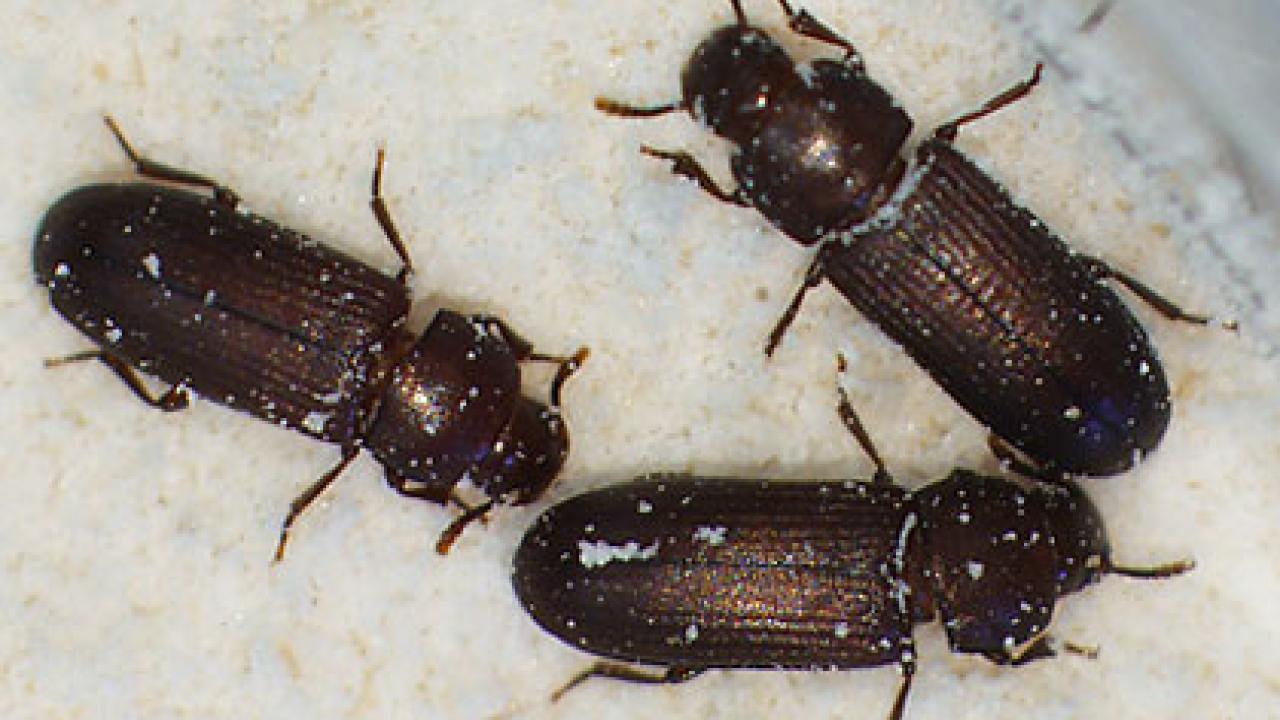Bugs in boxes are helping UC Davis researcher Alan Hastings improve scientific tools used to predict the spread of invasive plants and animals.
In today's edition of the journal Science, Hastings and a University of Colorado colleague report their latest findings from both a tightly controlled laboratory experiment and a mathematical model: When they released 600 identical beetles and let them spread at will through 30 identical landscapes over 13 generations, there was a surprising degree of difference in the outcome.
Some of the beetles went far and fast, traveling across 31 landscape patches in the 15-month experiment, while others went only a third as far. The rest fell somewhere in the middle.
Hastings said the results suggest that it won't be as easy as some had hoped to catalog all the factors that influence the spread of an invasion.
If it is difficult to predict the course of an invasion, it will be difficult to control it. And there are hundreds of destructive invaders in the U.S. alone, from kudzu to zebra mussels to the light brown apple moth.
"There appears to be this intrinsic variability, even in the simplest ecological settings, that means that difficulty in prediction is a basic feature of ecological systems," said Hastings, a professor in the UC Davis Department of Environmental Science and Policy.
Hastings is currently a principal investigator or co-investigator on four grants totaling more than $1 million. These studies range from researching the dynamics of salmon and cod populations to species' response to global climate change.
Hastings' collaborator and co-author Brett Melbourne was previously a postdoctoral scholar at UC Davis, and is now an assistant professor in the Department of Ecology and Evolutionary Biology at the University of Colorado, Boulder.
If invasion forecasts are to improve, Melbourne said, ecologists will have to keep trying to quantify the randomness in environmental and biological processes. "Ecological forecasts will become more like weather forecasts, with a stated range of probability but not certainty, like when the meteorologist says there is a 75 percent chance of rain on Thursday."
The study, "Highly Variable Spread Rates in Replicated Biological Invasions: Fundamental Limits to Predictability," is online at http://www.sciencemag.org/cgi/content/abstract/325/5947/1536.
It was funded by the National Science Foundation.
About UC Davis
For 100 years, UC Davis has engaged in teaching, research and public service that matter to California and transform the world. Located close to the state capital, UC Davis has 31,000 students, an annual research budget that exceeds $500 million, a comprehensive health system and 13 specialized research centers. The university offers interdisciplinary graduate study and more than 100 undergraduate majors in four colleges -- Agricultural and Environmental Sciences, Biological Sciences, Engineering, and Letters and Science -- and advanced degrees from six professional schools -- Education, Law, Management, Medicine, Veterinary Medicine and the Betty Irene Moore School of Nursing.
Media Resources
Alan Hastings, Environmental Science and Policy, 530-752-8116, amhastings@ucdavis.edu
Brett Melbourne, Ecology and Evolutionary Biology, Univ. of Colorado, Boulder, (303) 492-8961, brett.melbourne@colorado.edu
